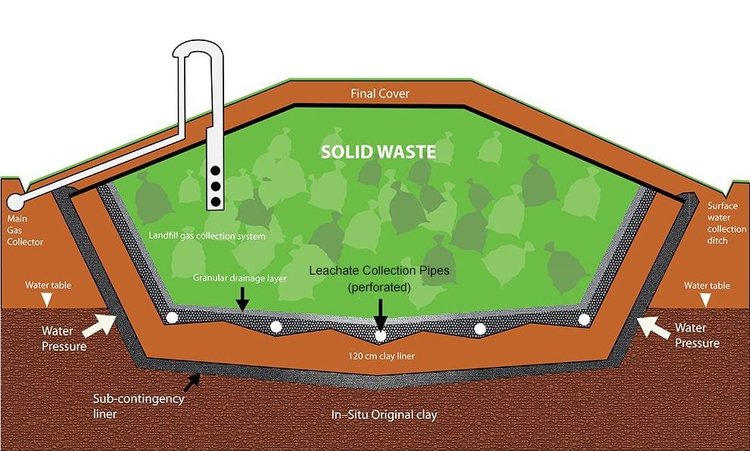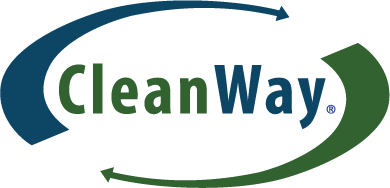
Leachate Treatment Requirements
The treatment requirements for leachate from landfills can vary, depending on the discharge requirements, and the contaminants present. Leachate from sanitary landfills is generally characterized by high TDS, heavy metals, high BOD and/or COD, high ammonia, and color. Discharge options include discharge to a publicly owned treatment works or, where no access to sewer is available, discharge to ground or surface water. In the case of the latter, the treatment requirements are much greater than when discharge to a POTW is available.
In general, when discharging to a POTW, treatment requirements may include removal of heavy metals and ammonia. Further requirements may include removal of some BOD and also COD if maximum discharge limits are in place. Some discharge permits may also include color removal requirements, and occasionally, removal of some TDS, although these requirements are not typical.
How Leachate Affects Groundwater

Landfill leachate poses a threat to surface water and groundwater if not properly managed at MSW facilities. The composition of leachate usually contains both dissolved metals and suspended solids that need to be captured before seeping into the groundwater.
USGS Leachate Study
According to a recent study by the USGS, landfill leachate released to wastewater treatment plants and other environmental pathways contains a mixture of contaminants including pharmaceuticals. New research details how landfill leachate, disposed from landfills to environmental pathways, is host to numerous contaminants of emerging concern.
Indeed, landfills are the final repository for a heterogeneous mixture of liquid and solid waste from residential, industrial, and commercial sources, and thus, have the potential to produce leachate—a liquid waste product that consists of a diverse mixture of chemicals as precipitation or applied water moves through the waste. Landfills are often not the final repository for leachate which can be discharged to surface waters following onsite or offsite wastewater treatment.
In the study, scientists determined that final leachate samples contained 101 of the 190 chemicals analyzed for the study, with chemicals present in every final leachate sample collected. The most frequently detected chemicals were lidocaine (local anesthetic, found in 91 percent of samples), cotinine (nicotine breakdown product, 86 percent), carisoprodol (muscle relaxant, 82 percent), bisphenol A (component for plastics and thermal paper, 77 percent), carbamazepine (anticonvulsant, 77 percent), and N,N-diethyltoluamide (DEET, insect repellent, 68 percent).
Employ MetalZorb to treat landfill leachate at risk of exposing groundwater and surface runoff to harmful chemicals.
How MetalZorb Can Treat Leachate
MetalZorb® is a high capacity sponge media that captures and holds accumulated dissolved heavy metals from being released to downstream waterways. MetalZorb efficiently removes, reduces and/or recovers particulate heavy metals including lead, zinc, copper, chromium, iron, mercury, nickel and more.
One of the most important features of MetalZorb is that it does not require a backwash. This alleviates the problems associated with disposal of dirty backwash water or regenerant chemicals.
Contact a CleanWay Stormwater Professional today to learn how we can deploy MetalZorb at your site to help mitigate your leachate concerns.
